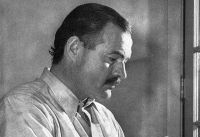32 facts about Michelangelo
Michelangelo is considered one of the greatest artists in world history. Along with Leonardo da Vinci and Raphael, he is regarded as one of the three ...
40 facts about Frederic Chopin
Fryderyk Chopin , a brilliant Polish composer of the Romantic period and one of the most famous pianists of his time. In Paris he was called Chopinett ...
23 facts about Salvador Dali
Salvador Domingo Felipe Jacinto Dali and Domenech, the Marquis de Pubol, was the son of a notary, Catalan painter, surrealist, who was born in Figuere ...






















